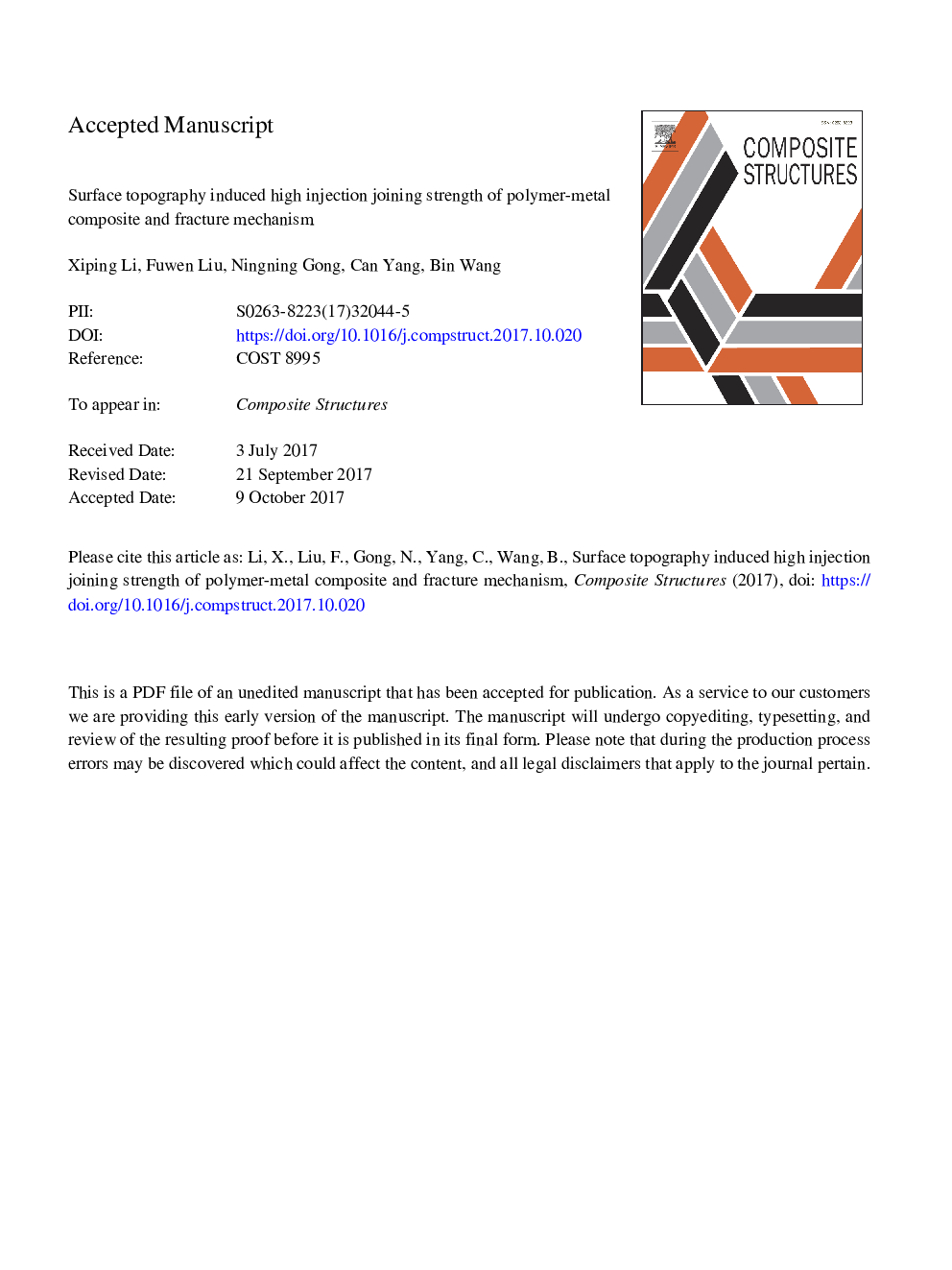| Article ID | Journal | Published Year | Pages | File Type |
|---|---|---|---|---|
| 6704823 | Composite Structures | 2018 | 22 Pages |
Abstract
A new injection joining technology based on surface topography was presented to form polymer-metal composite structure (PMCS) which plays a pivotal role in engineering field. A temperature control system facilitating filling of the surface structures by polymer melt was established. The quantitative relation between the surface topography and the interfacial mechanical strength was demonstrated, and the optimum dimension scope of the surface topography for achieving good mechanical performance of PMCS was determined. Using the optimum dimensions, the shearing strength between the metal and polymer interface reaches about eleven folds compared to the case with non-treated metal surfaces. The fracture mechanism of the PMCS was analyzed and disclosed. Meanwhile, for better understanding filling process of the structure by the melt, a numerical model was established to investigate effects of surface topography and the injection parameters on the melt flowing process. Experiment and simulation results can be used to guide the development of the new PMCS.
Keywords
Related Topics
Physical Sciences and Engineering
Engineering
Civil and Structural Engineering
Authors
Xiping Li, Fuwen Liu, Ningning Gong, Can Yang, Bin Wang,
